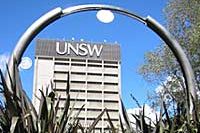|
||||||||||||||||||||||||||
| Anatomy - ANATA23970 | ||||||||||||||||||||||||||
This plan is for a Minor in Anatomy.
Anatomy is the study of the structure of the human body. The word 'anatomy' is derived from the Greek, and means 'cutting up' or 'dissection'. However, anatomy today is much more than the descriptive study of the dissected body, although dissected specimens are still used for research and instruction. The study of Anatomy now embraces separate but strongly related disciplines. Gross Anatomy deals with the description of form, arrangement and function of the bones, joints, muscles and internal organs, together with their blood and nerve supply. Histology deals with the microscopic structure of tissues and cells. Embryology is concerned with the normal development of the embryo and fetus from conception to birth and with the mechanisms of development and malformations. Neuroanatomy deals with the internal organisation and functions of the brain and spinal cord. Biological Anthropology involves applying biological principles and approaches to the study of humans and non-human primates. In all courses in Anatomy, strong emphasis is given to the functional significance of the structures in health and in disease. For a MINOR in Anatomy, successful completion of the following is required:
Successful completion of Anatomy (ANAT) courses totalling a minimum of 24 units of credit at Level II or Level III. |
||||||||||||||||||||||||||



